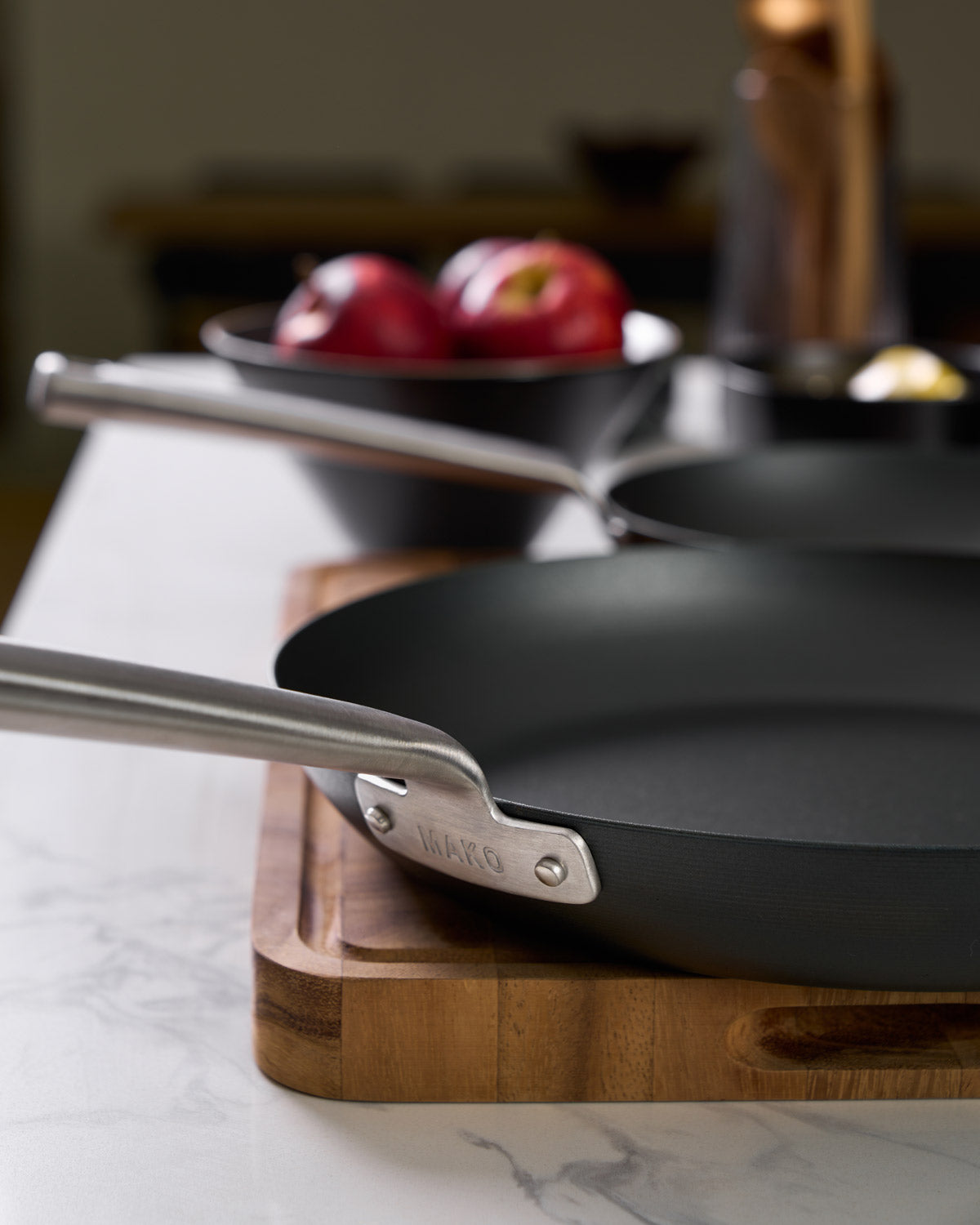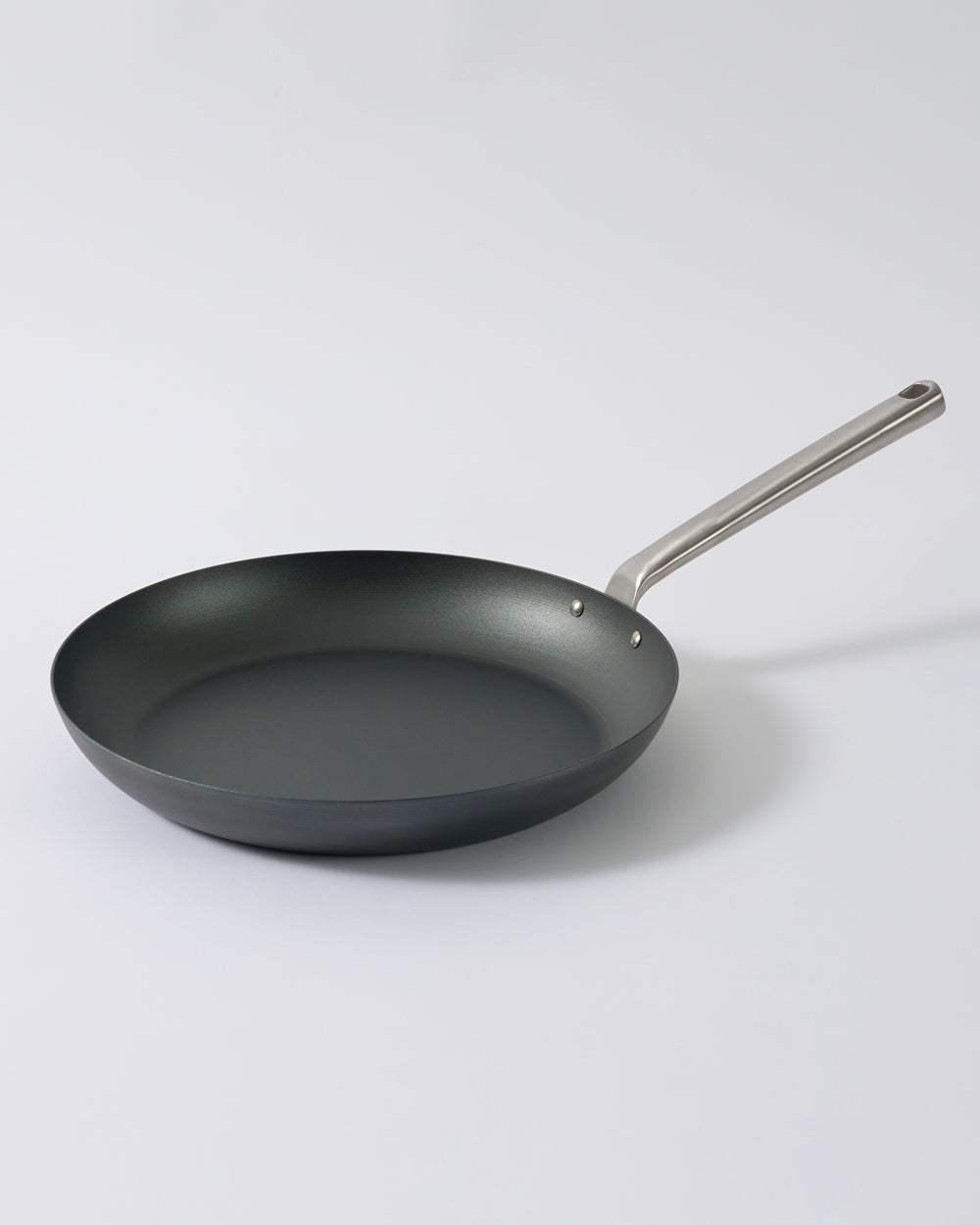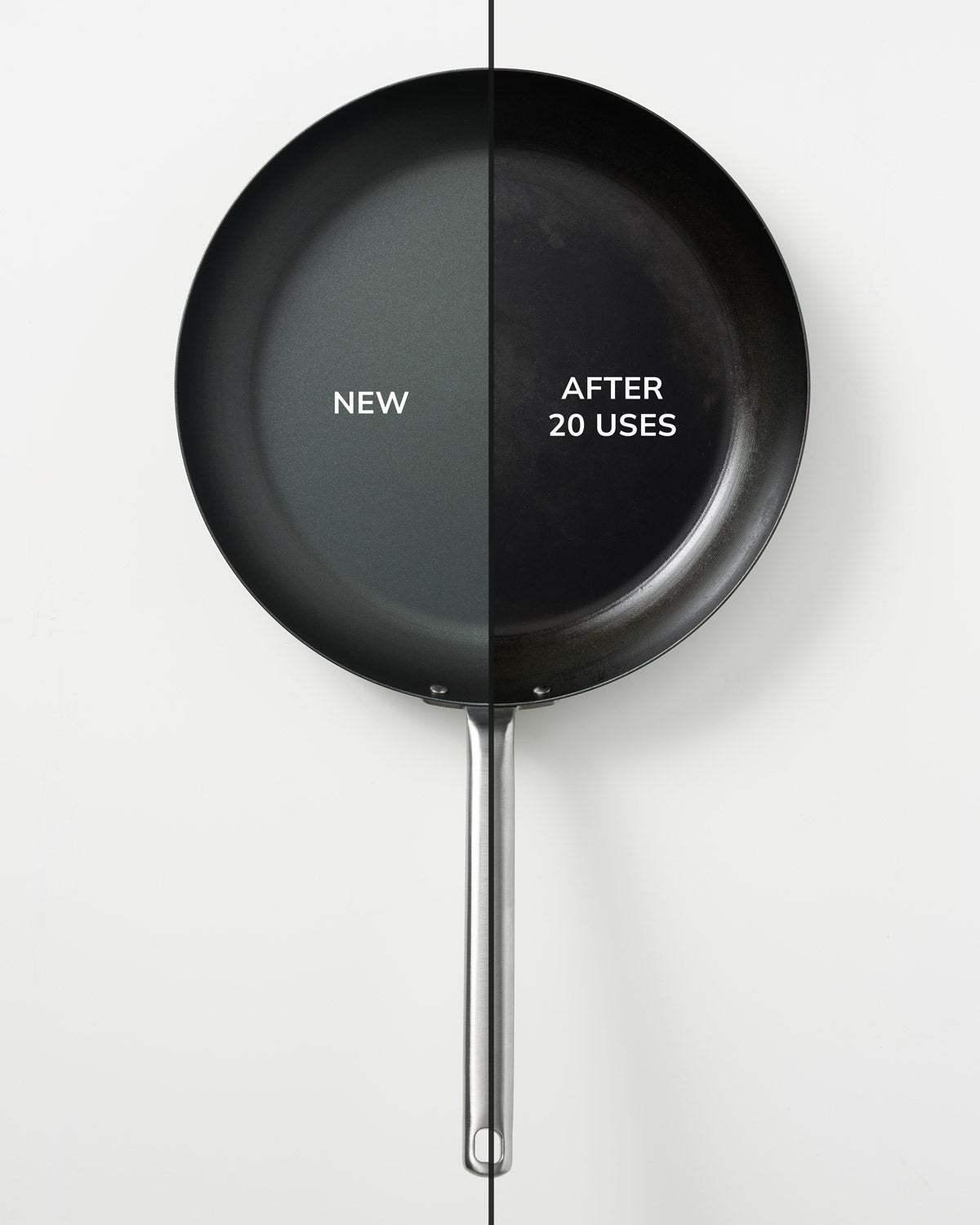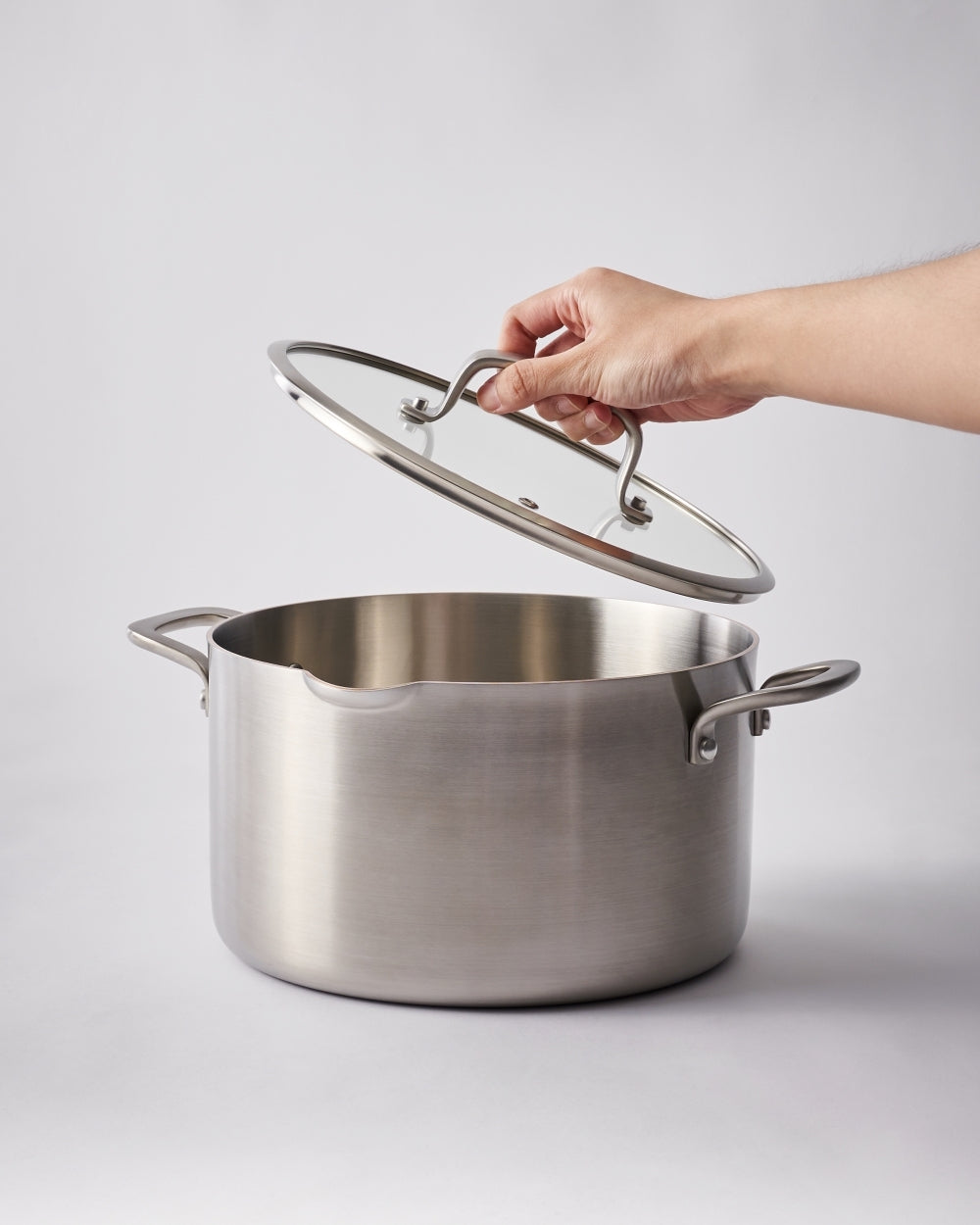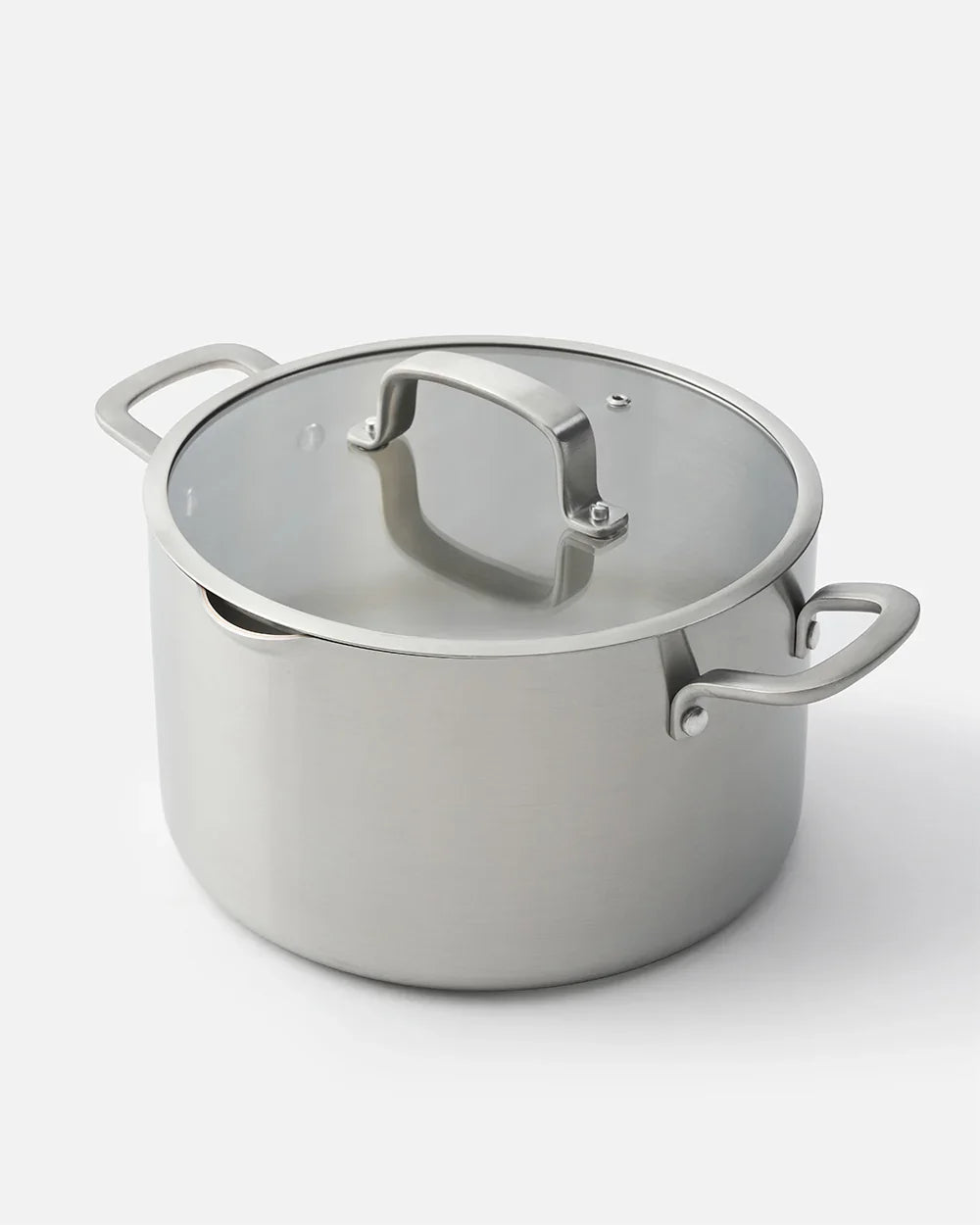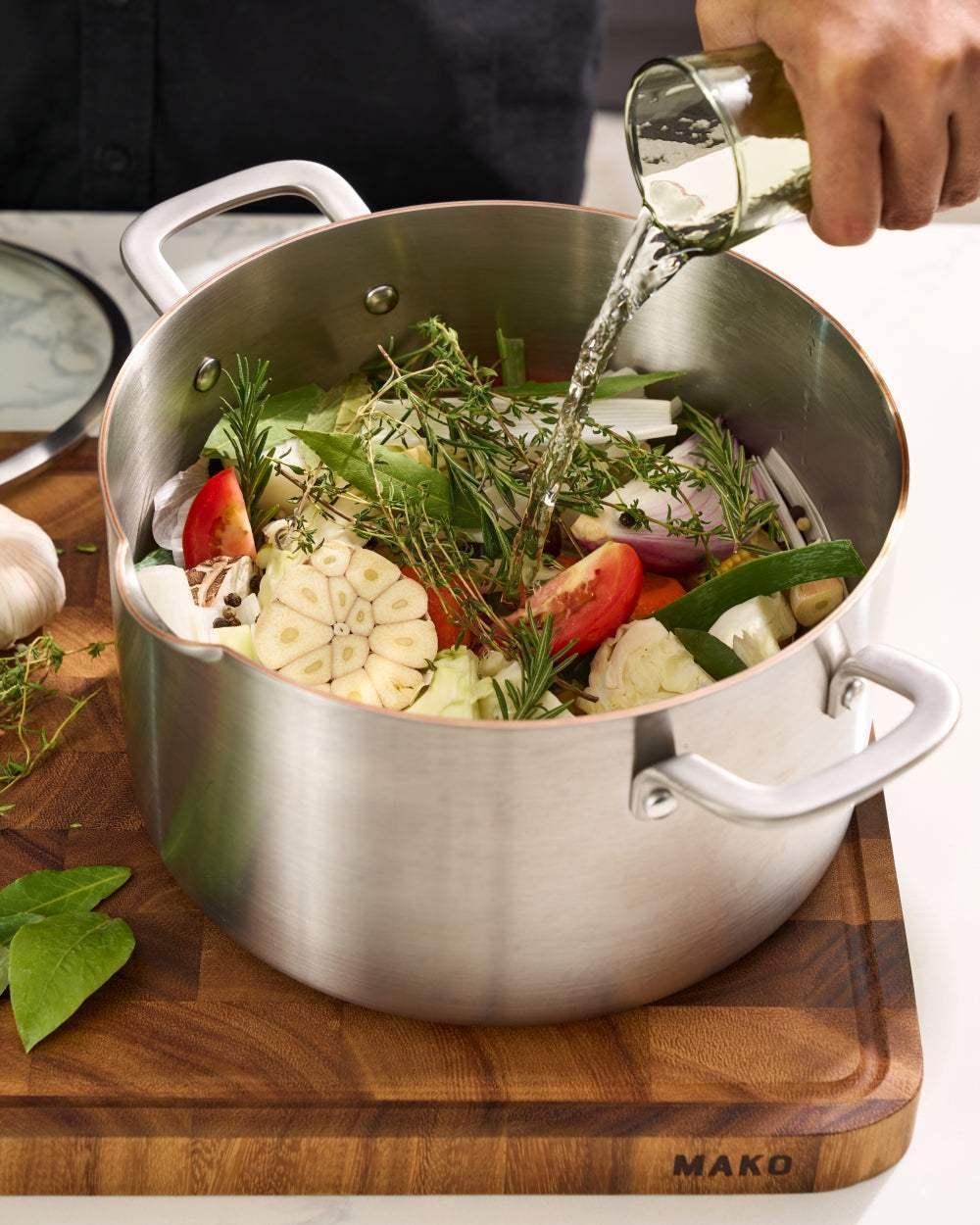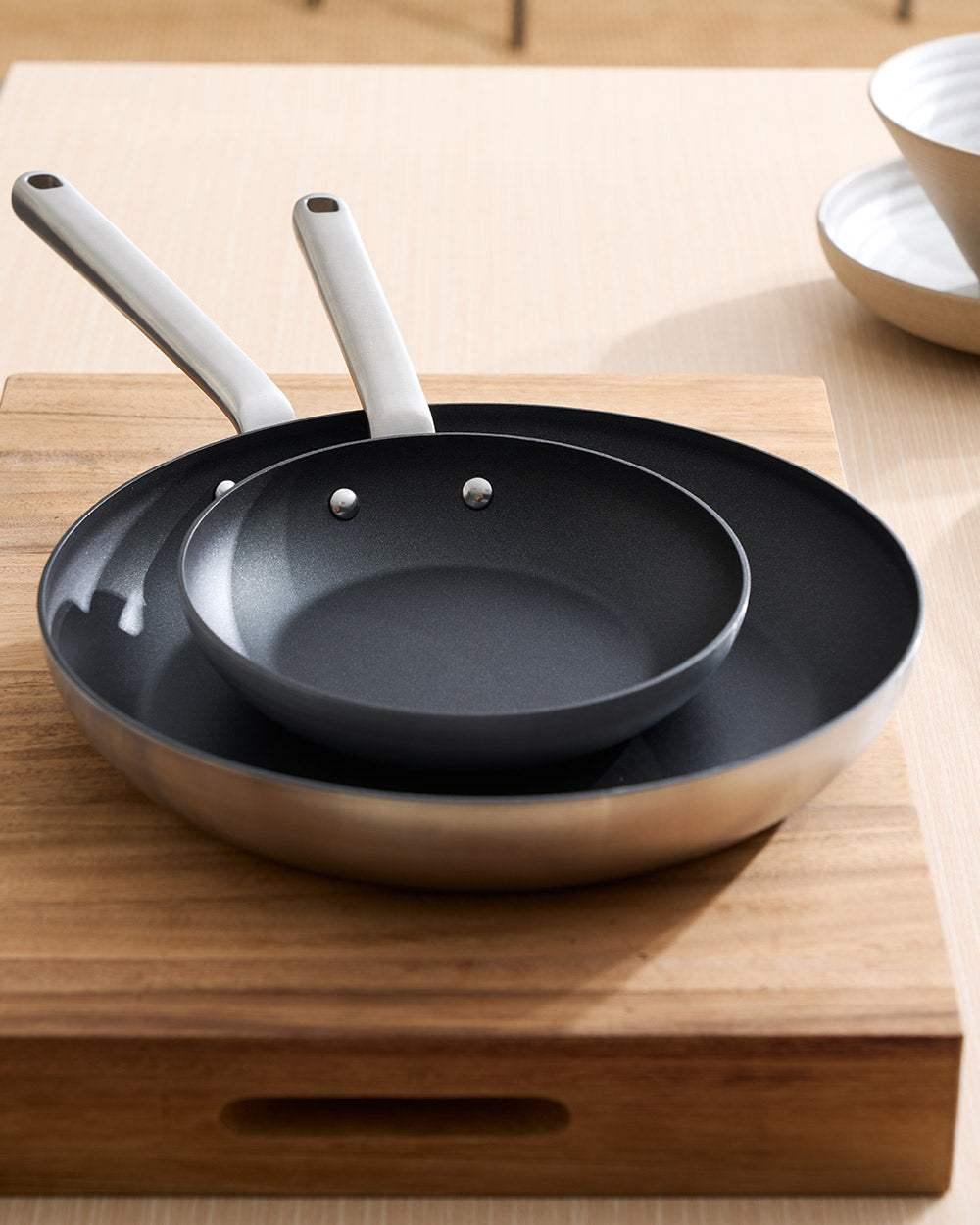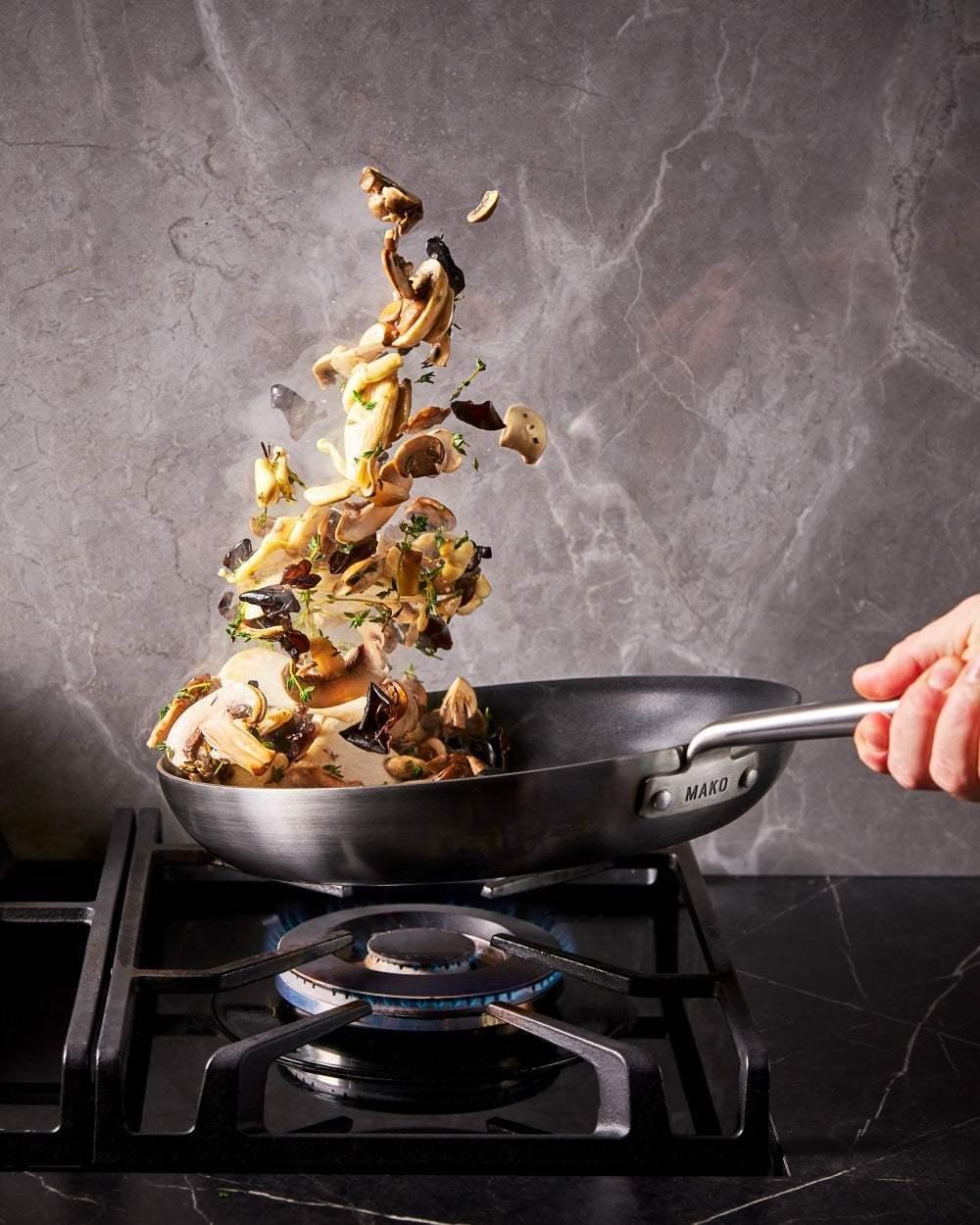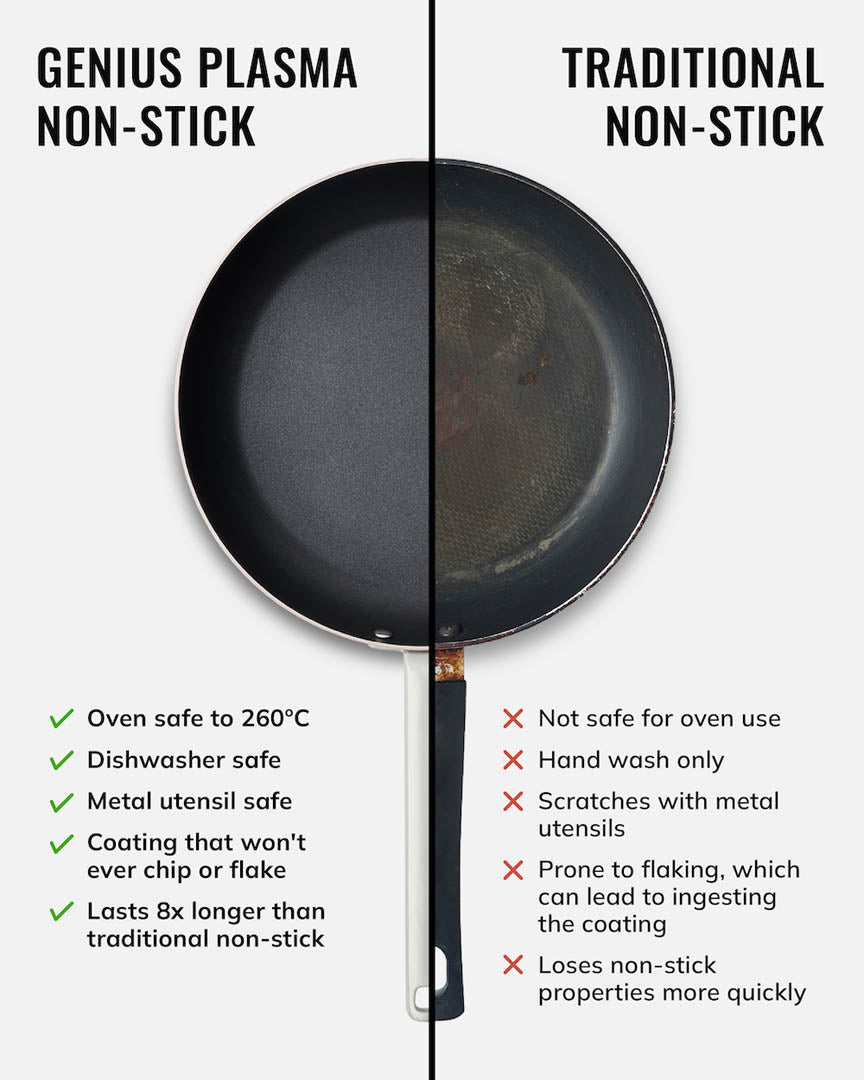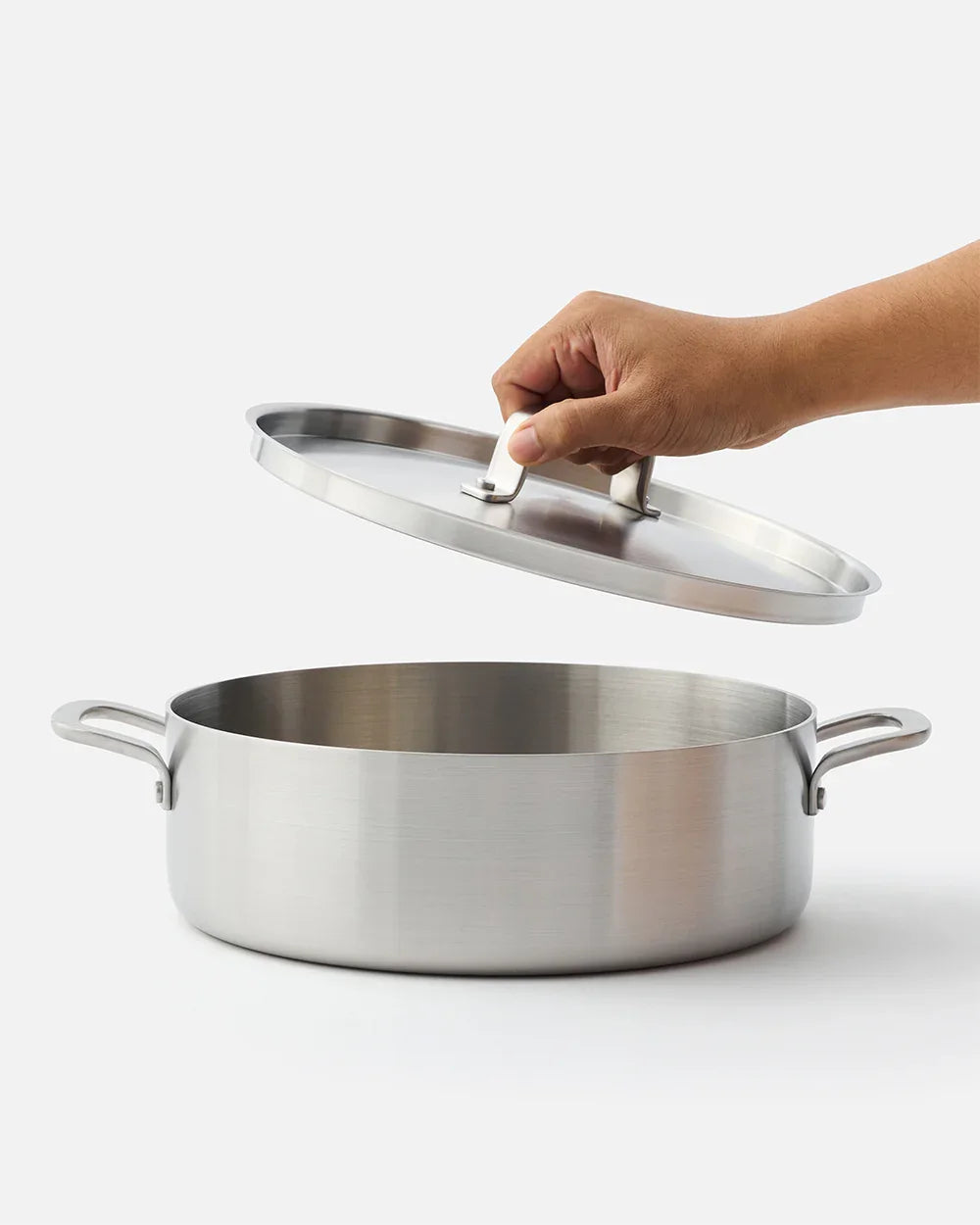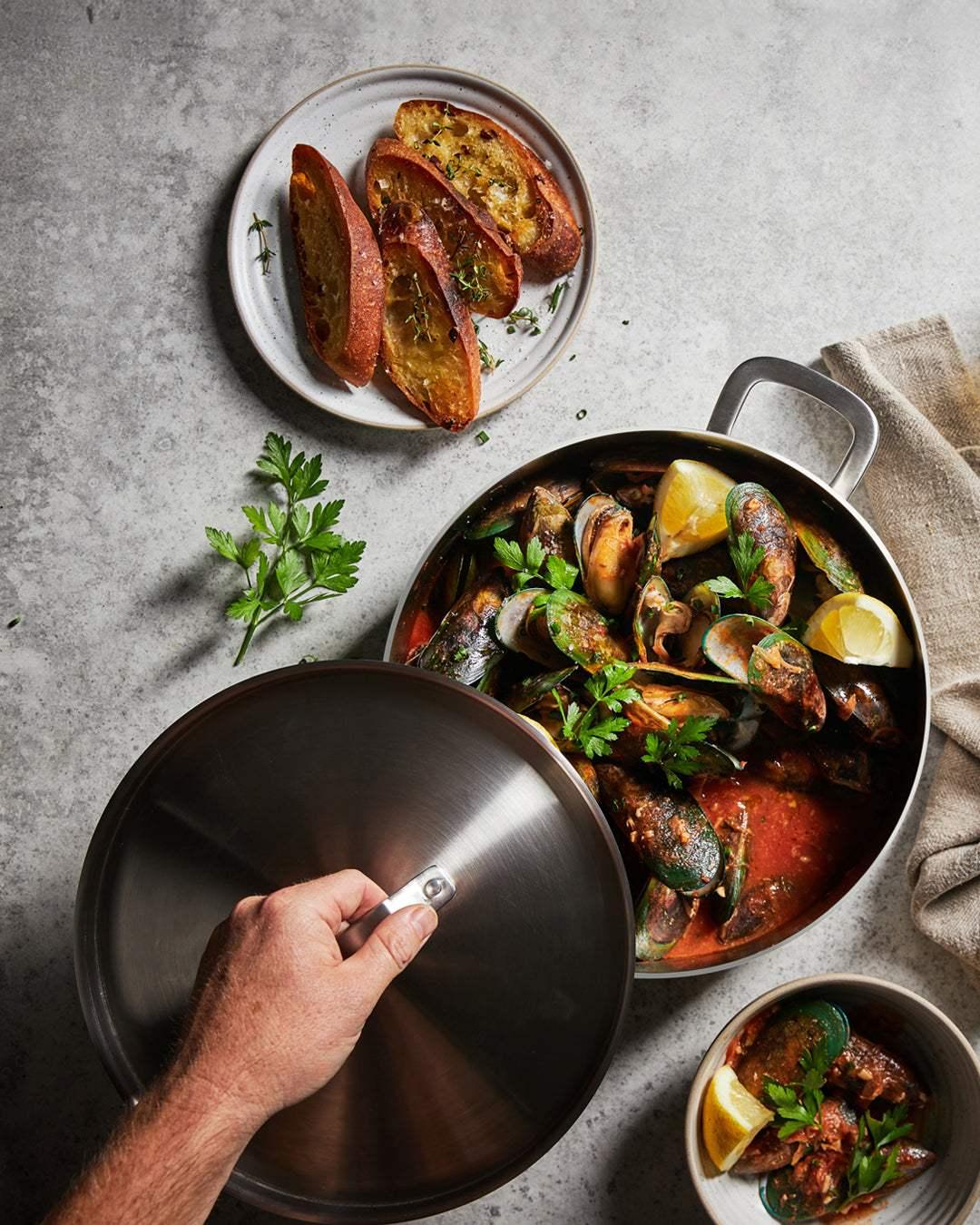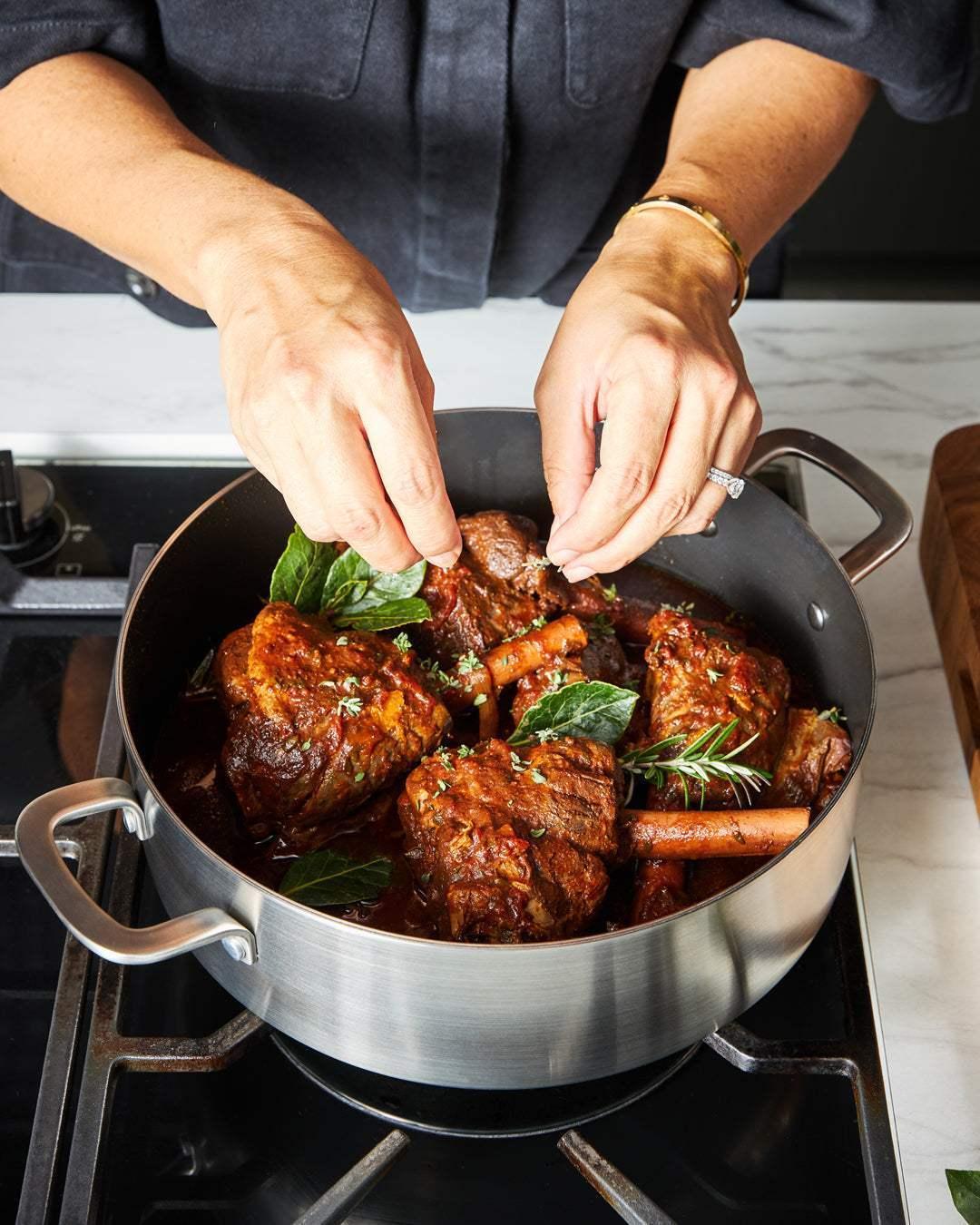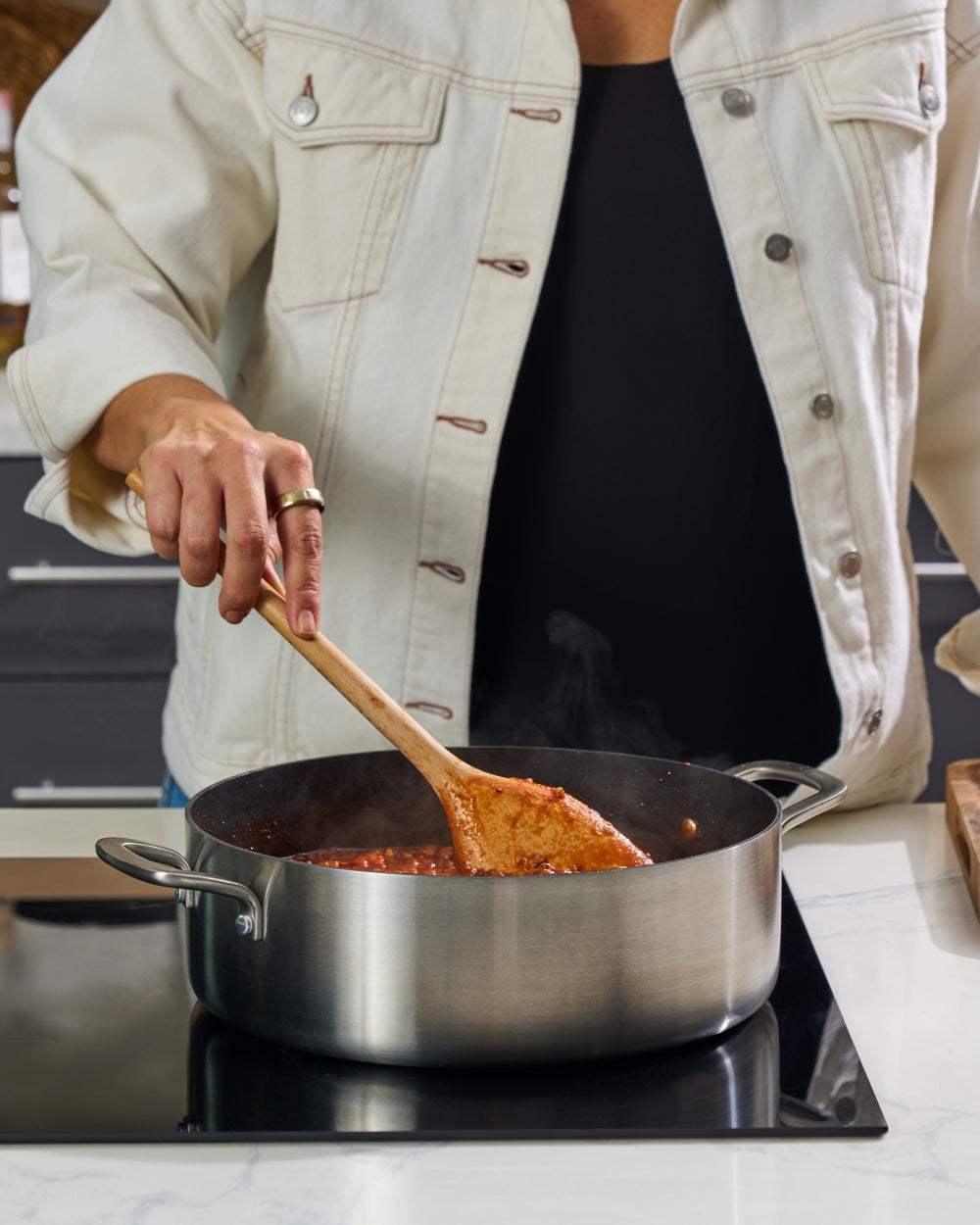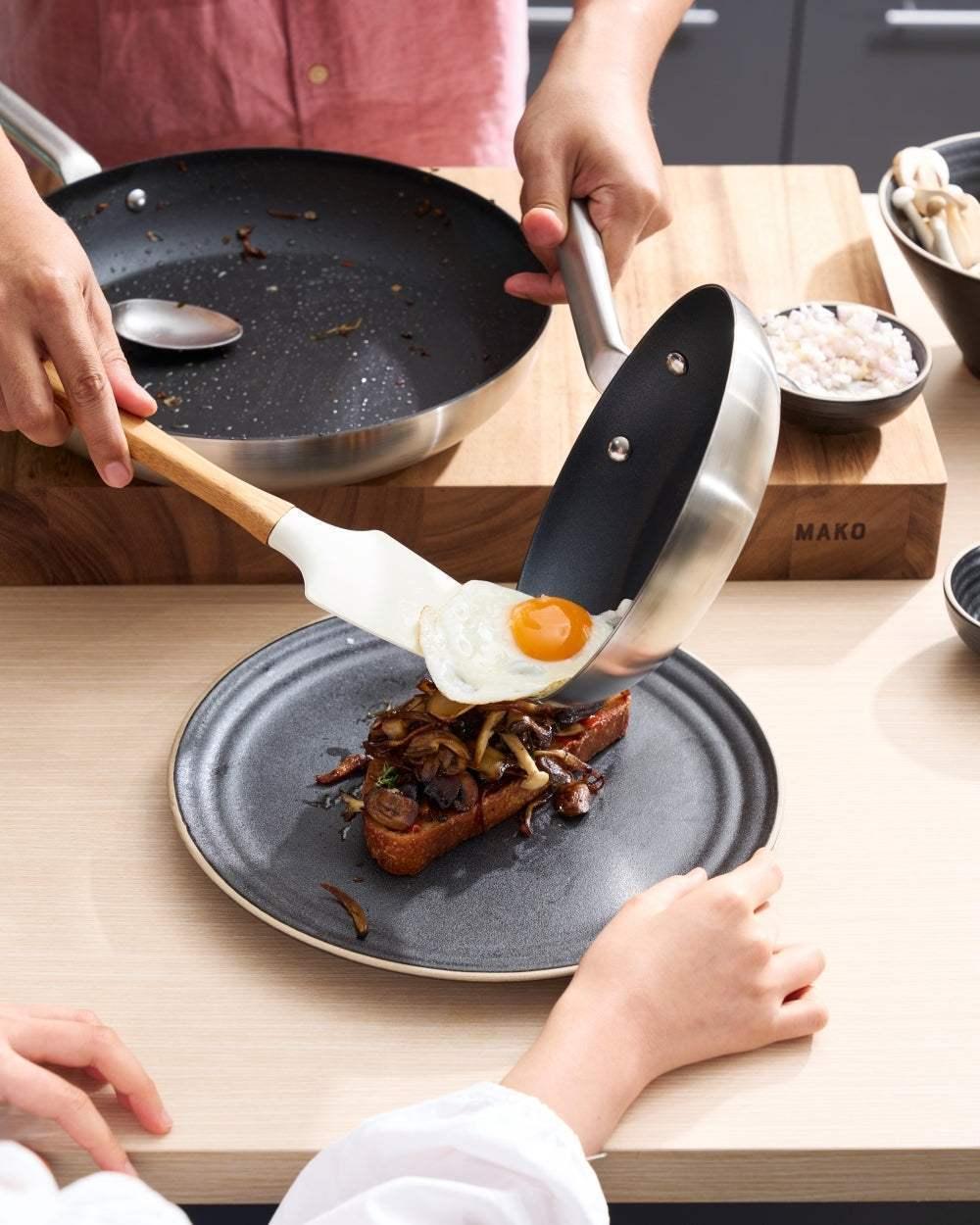
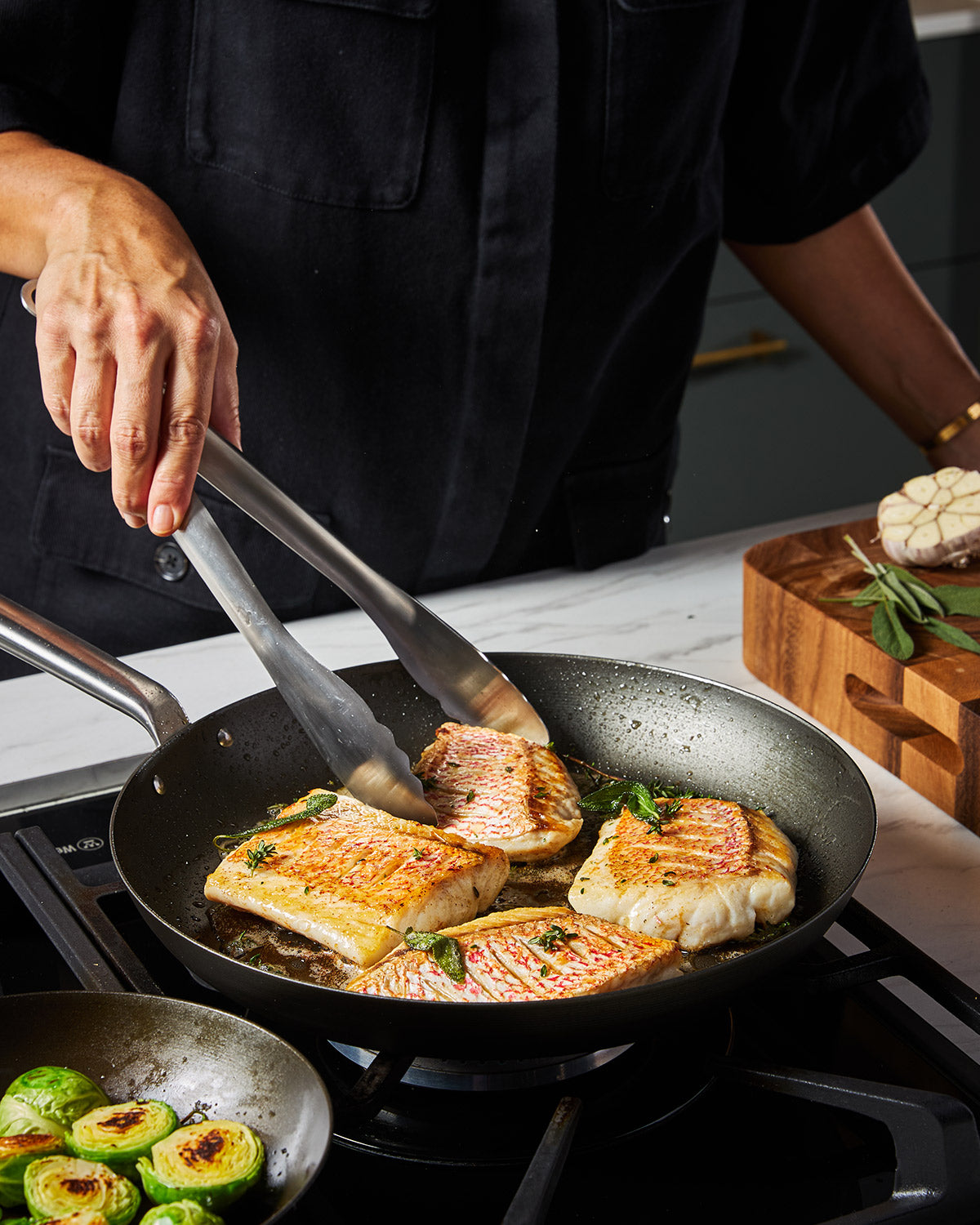
Which is the best pan for cooking fish?
Cooking fish. We know that many home cooks avoid it like the plague, maybe thinking it’s all-round too tricky. But nothing could be further from the truth; fish is quick and simple to cook, there’s little to no waste, and using the correct pan will have you cooking fish like a pro. Promise.
Which pan is best for cooking fish?
This depends on what kind of fish you’re talking about. Skin off or skin on? Whole fish or fillets? White-fleshed or oily? Firm and meaty-textured, or delicate? Different scenarios favour a different material or type, but don’t sweat it; it’s not complicated. At all. Here’s the low-down:
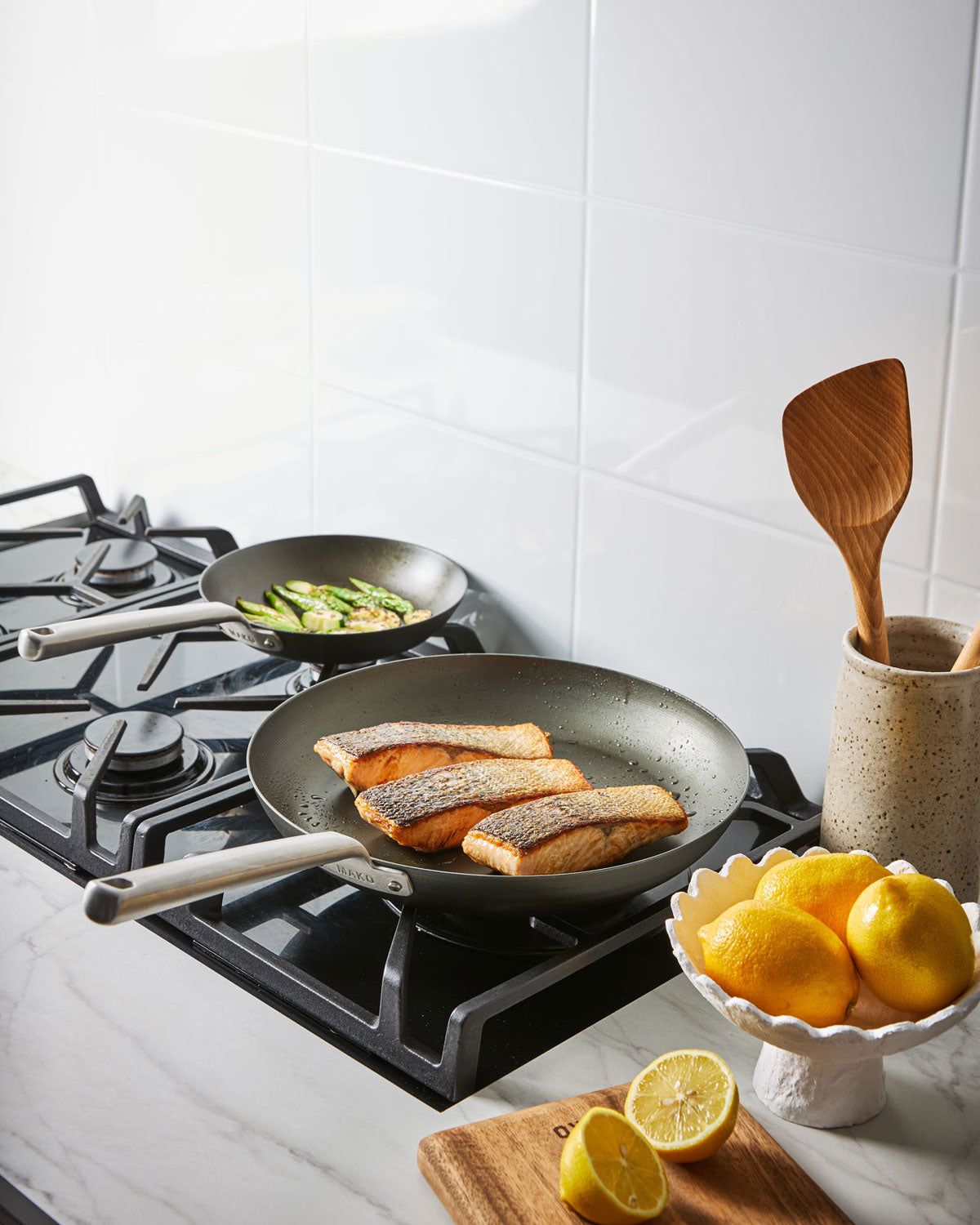
Carbon steel frying pans
With its patina finish, top-of-class heat responsiveness and amazing cooking control, this is the pan for searing thick, meaty fillets like tuna or swordfish.
- Rather like steak, these can handle fast, high-heat cooking and should be left a little pink in the middle.
- Also the ultimate pan for skin-on fillets where the aim is shatteringly crisp skin; salmon, trout, barramundi, blue-eye cod, snapper and mulloway, for example.
SHOP HERE

5-ply stainless steel pan
Delivering even heat across the base and, like carbon steel, responsive to changes in temperature, this type of pan is a good all-rounder.
- It will give you a light crust on fillets, but also cook more delicate or smaller fish (either fillets or whole with heads on) over a well-controlled lower heat.
- Also for when you want to baste in butter, or finish your fish with a splash of lemon juice, wine vinegar or wine – unlike carbon steel, this material is completely non-reactive.
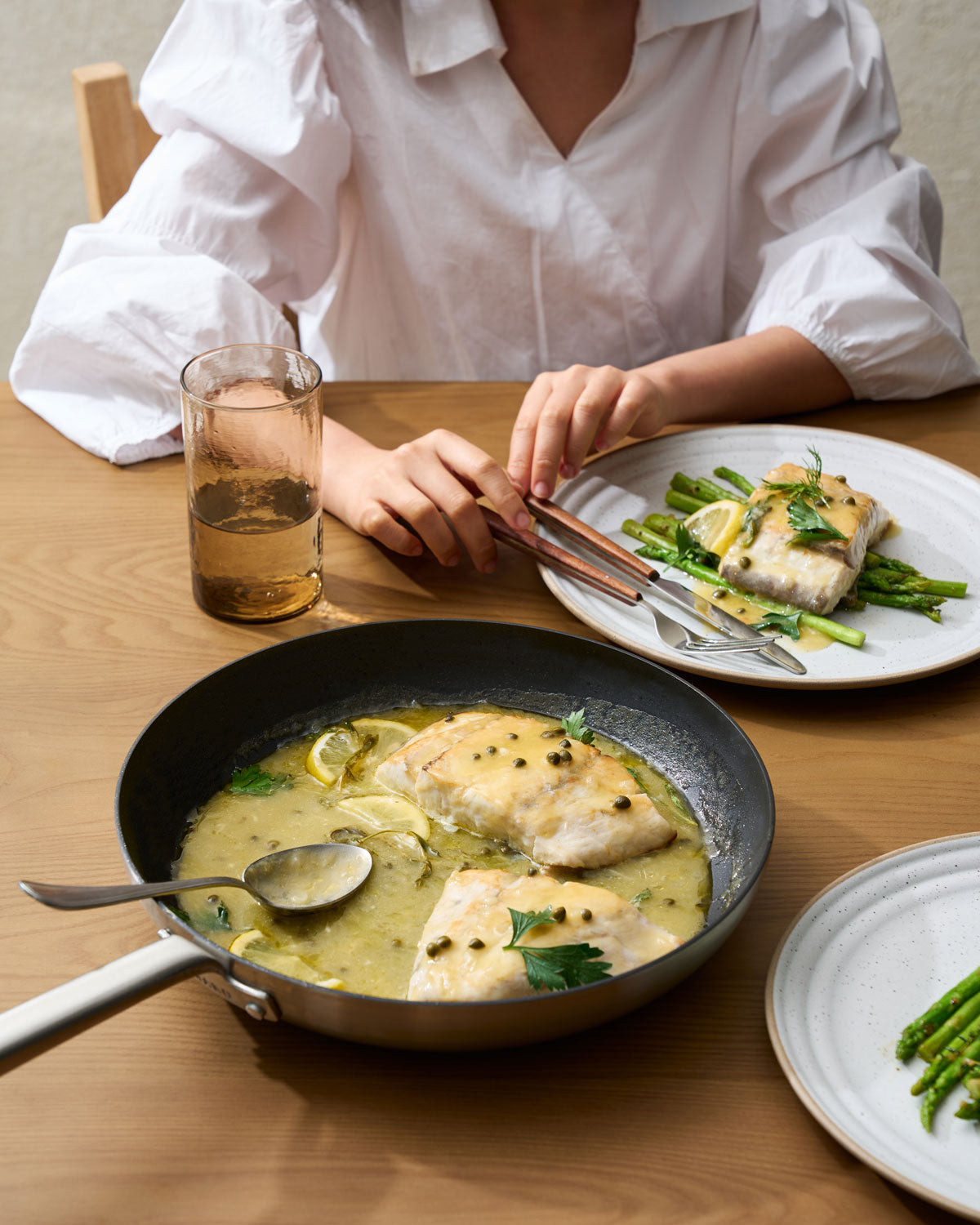
Non-stick frying pan
Perfect for no-fuss, fail safe, everyday fish cooking where you don’t require intense heat for searing. Or when you prefer to use less oil or butter.
- The quality of non-stick pans varies wildly, in both the coated surface and what’s under the hood in the construction. Make sure you buy pans with a hefty, 5-ply construction and a durable surface.
- A good non-stick pan is ideal for the beginner fish cook; once you’ve mastered fish, you can level up to a carbon steel or stainless steel option.
SHOP HERE
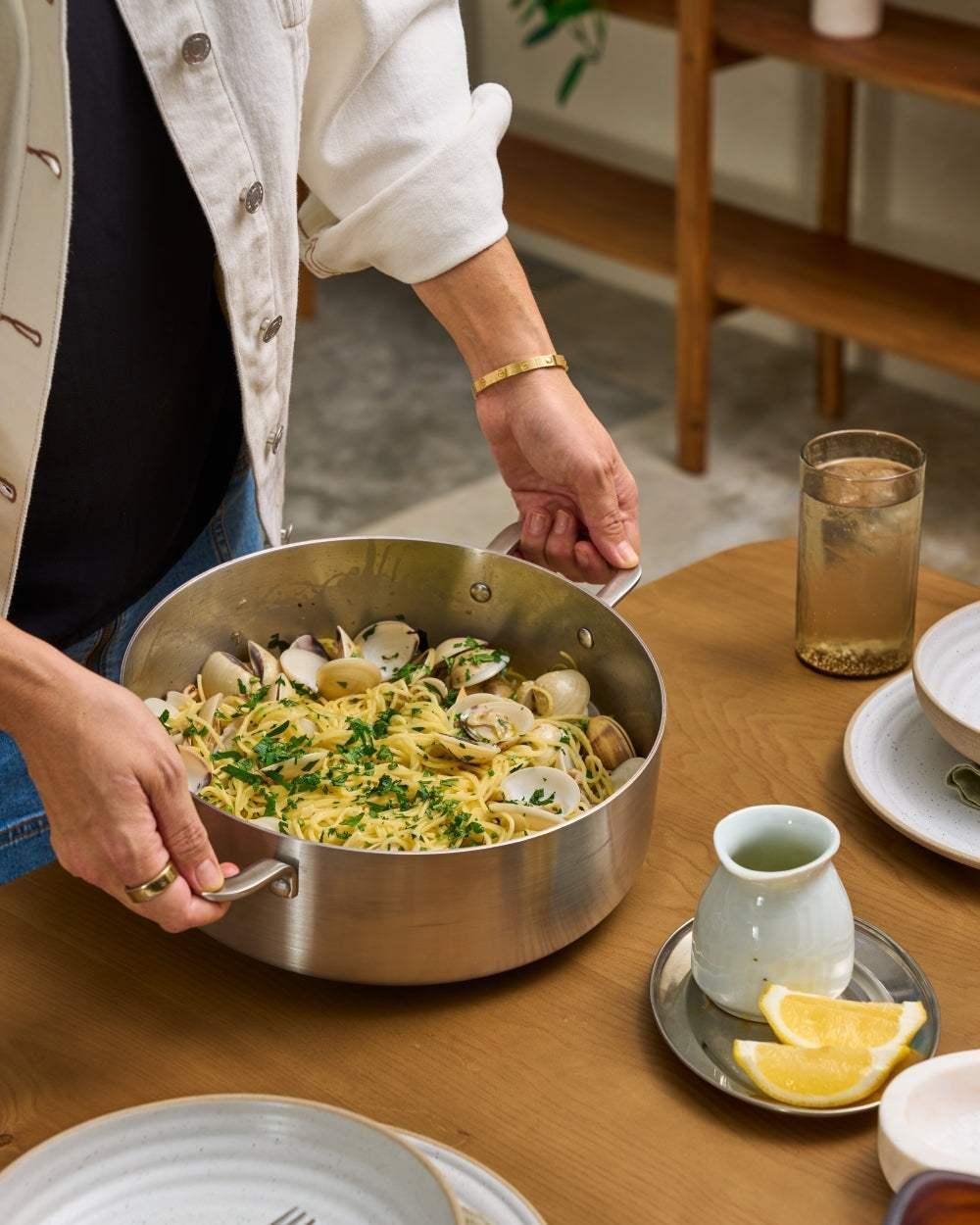
Deep lidded sauté pan
This is the ideal size and shape for cooking fish-based braises, stews and soups.
- Perfect for any one-pot dish where you brown aromatics and vegetables first, add fish and cooking liquid, then either simmer on the stove top or transfer to the oven to finish cooking.
- This pan works in either stainless steel or non-stick finishes, depending on your personal preference.
SHOP HERE
Fish cooking tips
- This goes without saying – buy the freshest fish you can (it should smell of the sea) and cook it the same day if possible.
- Bring your fish to room temperature before cooking.
- Pat fish dry before cooking to prevent sticking, particularly the skin if crispy-ness is the goal.
- Season your fish well with salt before cooking.
- Get your pan hot, then add oil.
- Add fillets to the pan skin side down – for crispy skin, cook until the flesh is about two-thirds cooked through before turning it over, to give the skin maximum heat exposure. Occasionally pressing down on it firmly with a wide spatula stops the fish curling and gives more even heat exposure.
- Flip your fillets once only – they can fall apart if turned too much.
- To check your fish is cooked, use a fork to twist and pull up flesh through the thickest part. It shouldn’t offer any resistance, will flake easily, and you shouldn’t see any opaque (uncooked) flesh. If you have a digital thermometer, fish should register 63°C when cooked through; medium rare fish such as salmon and tuna will be 52°C.

